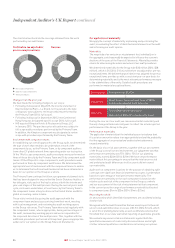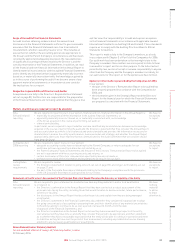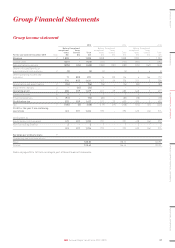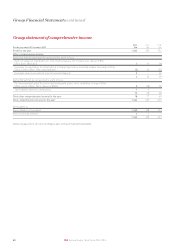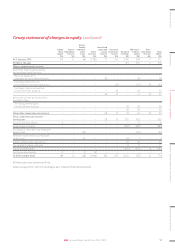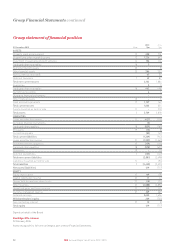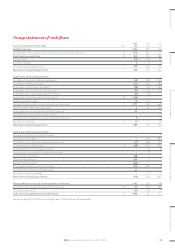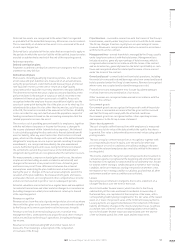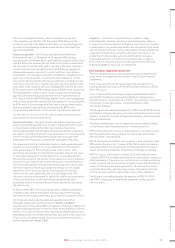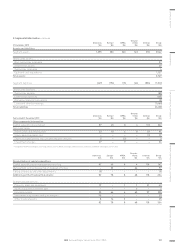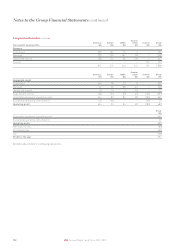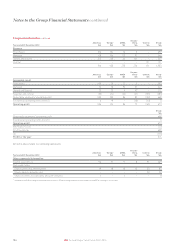Holiday Inn 2015 Annual Report Download - page 96
Download and view the complete annual report
Please find page 96 of the 2015 Holiday Inn annual report below. You can navigate through the pages in the report by either clicking on the pages listed below, or by using the keyword search tool below to find specific information within the annual report.General information
This document constitutes the Annual Report and Financial
Statements in accordance with UK Listing Rules requirements and
the Annual Report on Form 20-F in accordance with the US Securities
Exchange Act of 1934.
The Consolidated Financial Statements of InterContinental Hotels
Group PLC (the Group or IHG) for the year ended 31 December 2015
were authorised for issue in accordance with a resolution of the
Directors on 22 February 2016. InterContinental Hotels Group PLC
(the Company) is incorporated and domiciled in Great Britain and
registered in England and Wales.
Summary of significant accounting policies
Basis of preparation
The Consolidated Financial Statements of IHG have been prepared on
a going concern basis and under the historical cost convention, except
for available-for-sale equity securities and derivatives which are
measured at fair value. The Consolidated Financial Statements have
been prepared in accordance with International Financial Reporting
Standards (IFRSs) as issued by the IASB and in accordance with IFRS
asadopted by the European Union (EU) and as applied in accordance
with the provisions of the Companies Act 2006. IFRS as adopted by
the EU differs in certain respects from IFRS as issued by the IASB.
However, the differences have no impact on the Consolidated Financial
Statements for the years presented.
With effect from 1 January 2015, the Group has adopted Amendments
to IAS 19 ‘Defined Benefit Plans: Employee Contributions’, and Annual
Improvements to IFRSs 2010 – 2012 Cycle and 2011 – 2013 Cycle.
The adoption of these amendments has had no material impact on
the Consolidated Financial Statements.
The Group adopted ‘Offsetting Financial Assets and Liabilities’
(Amendments to IAS 32) in 2014, resulting in restatements of 2013
cash and cash equivalents and current loans and other borrowings,
which both increased by $114m with no impact to the net financial
position of the Group.
Presentational currency
The Consolidated Financial Statements are presented in millions
of US dollars reflecting the profile of the Group’s revenue and
operating profit which are primarily generated in US dollars
or US dollar-linked currencies.
In the Consolidated Financial Statements, equity share capital,
the capital redemption reserve and shares held by employee share
trusts are translated into US dollars at the rates of exchange on the
last day of the period; the resultant exchange differences are recorded
in other reserves.
The functional currency of the parent company is sterling since this is
a non-trading holding company located in the United Kingdom that has
sterling denominated share capital and whose primary activity is the
payment and receipt of sterling dividends and of interest on sterling
denominated external borrowings and inter-company balances.
Basis of consolidation
The Consolidated Financial Statements comprise the Financial
Statements of the parent company and entities controlled by the
Group. Control exists when the Group has:
• power over an investee (ie existing rights that give it the current
ability to direct the relevant activities of the investee);
• exposure, or rights, to variable returns from its involvement
with the investee; and
• the ability to use its power over the investee to affect its returns.
All intra-group balances and transactions are eliminated
onconsolidation.
The assets, liabilities and results of those businesses acquired or
disposed of are consolidated for the period during which they were
under the Group’s control.
The Group operates a deferred compensation plan in the US which
allows certain employees to make additional provision for retirement,
through the deferral of salary with matching company contributions.
Employees can draw down on the plan in certain limited circumstances
during employment. The assets of the plan are held in a company-
owned trust which is not consolidated as the relevant activity of the
trust, being the investment of the funds in the trust, is directed by the
participating employees of the plan and the company has no exposure
to the gains and losses resulting from those investment decisions.
The assets of the trust are held solely for the benefit of the participating
employees and to pay plan expenses, other than in the case of a
company insolvency in which case they can be claimed by the general
creditors of the company. At 31 December 2015, the trust had assets
with a fair value of $148m (2014 $148m).
Foreign currencies
Transactions in foreign currencies are translated to functional
currency at the exchange rates ruling on the dates of the transactions.
Monetary assets and liabilities denominated in foreign currencies are
retranslated to the functional currency at the relevant rates of exchange
ruling on the last day of the period. Foreign exchange differences arising
on translation are recognised in the income statement except on foreign
currency borrowings that provide a hedge against a net investment in a
foreign operation. These are taken directly to the currency translation
reserve until the disposal of the net investment, at which time they are
recycled against the gain or loss on disposal.
The assets and liabilities of foreign operations, including goodwill,
are translated into US dollars at the relevant rates of exchange ruling
on the last day of the period. The revenues and expenses of foreign
operations are translated into US dollars at average rates of exchange
for the period. The exchange differences arising on retranslation are
taken directly to the currency translation reserve. On disposal of a
foreign operation, the cumulative amount recognised in the currency
translation reserve relating to that particular foreign operation is
recycled against the gain or loss on disposal.
Property, plant and equipment
Property, plant and equipment are stated at cost less depreciation
and any impairment.
Repairs and maintenance costs are expensed as incurred.
Land is not depreciated. All other property, plant and equipment
are depreciated to a residual value over their estimated useful
lives, namely:
• buildings – lesser of 50 years and unexpired term of lease; and
• fixtures, fittings and equipment – three to 25 years.
All depreciation is charged on a straight-line basis. Residual value
is re-assessed annually.
Property, plant and equipment are tested for impairment when events
or changes in circumstances indicate that the carrying value may not
be recoverable. Assets that do not generate independent cash flows
are combined into cash-generating units. If carrying values exceed
their estimated recoverable amount, the assets or cash-generating
units are written down to the recoverable amount. Recoverable
amount is the greater of fair value less costs of disposal and value in
use. Value in use is assessed based on estimated future cash flows
discounted to their present value using a pre-tax discount rate that
reflects current market assessments of the time value of money and
the risks specific to the asset. Impairment losses, and any subsequent
reversals, are recognised in the income statement.
Accounting policies
94 IHG Annual Report and Form 20-F 2015


